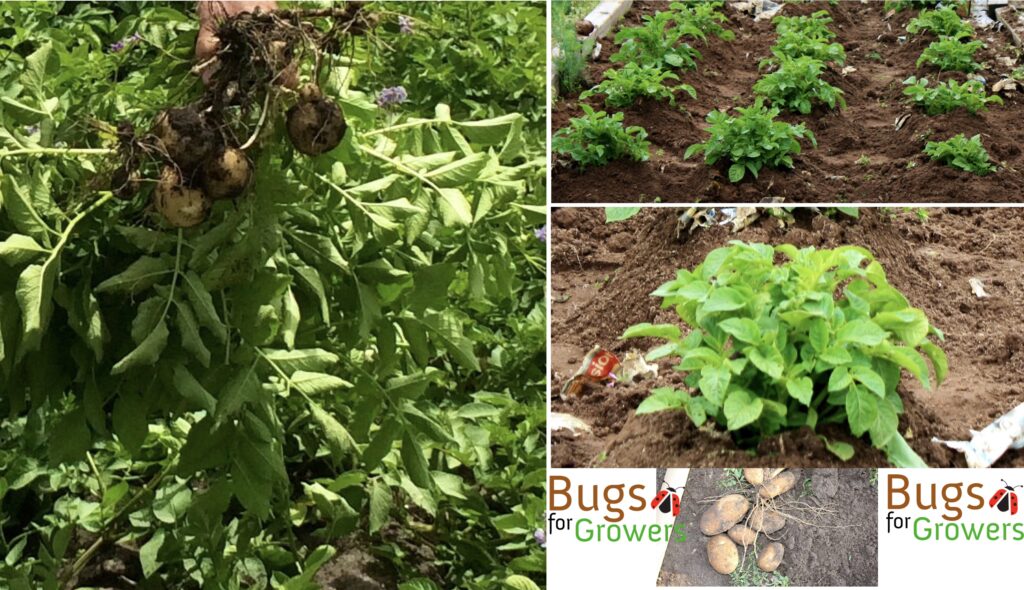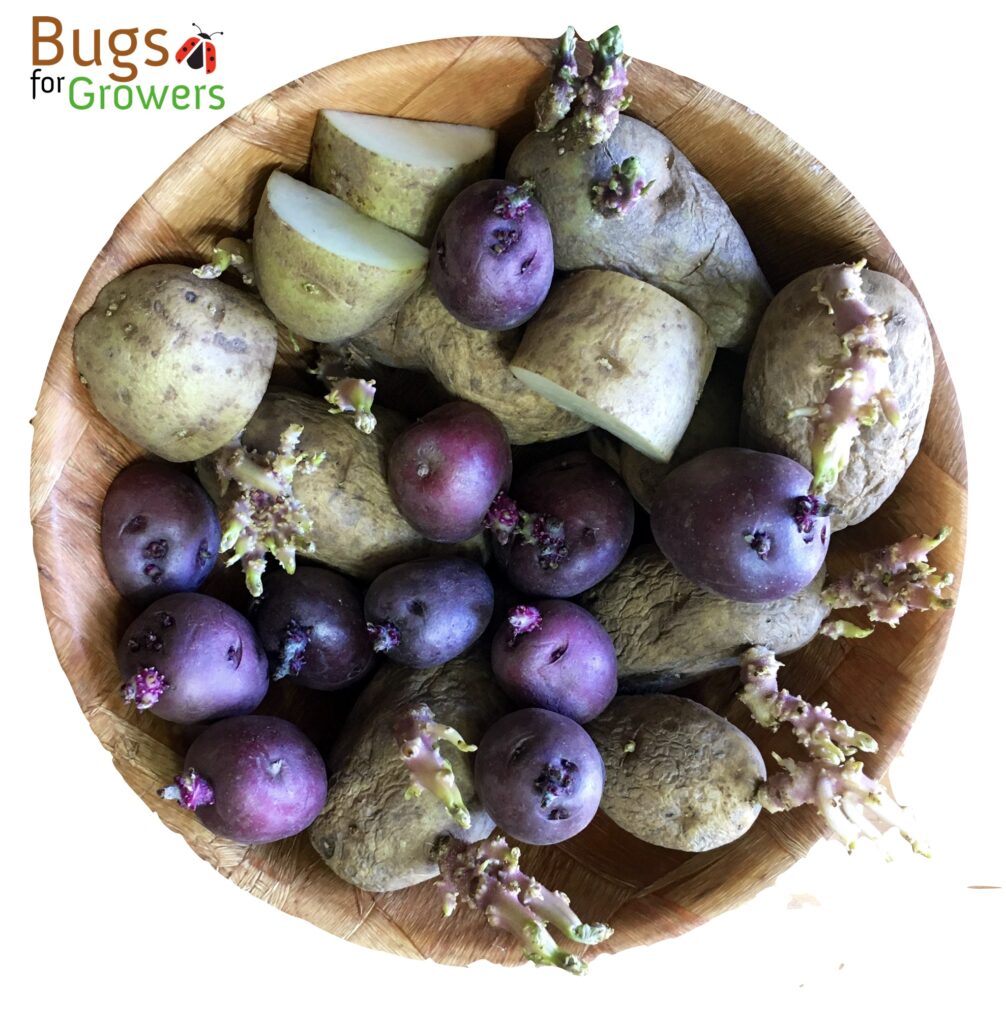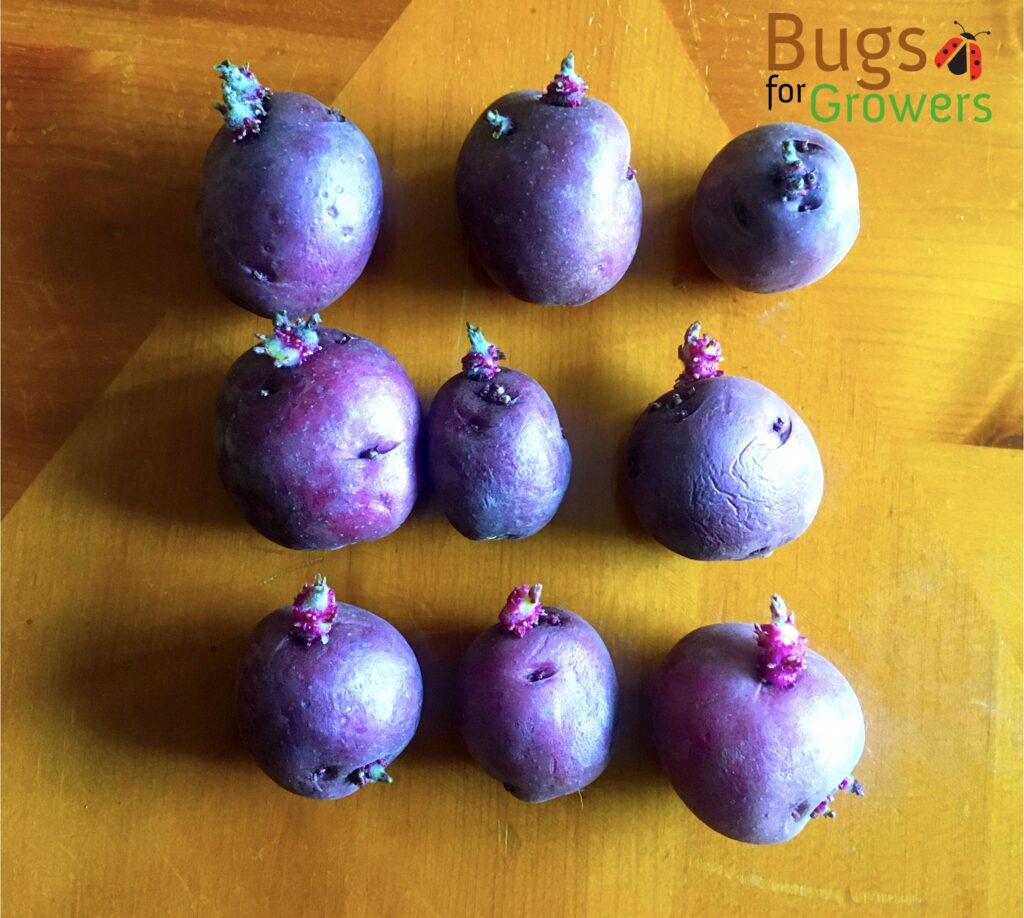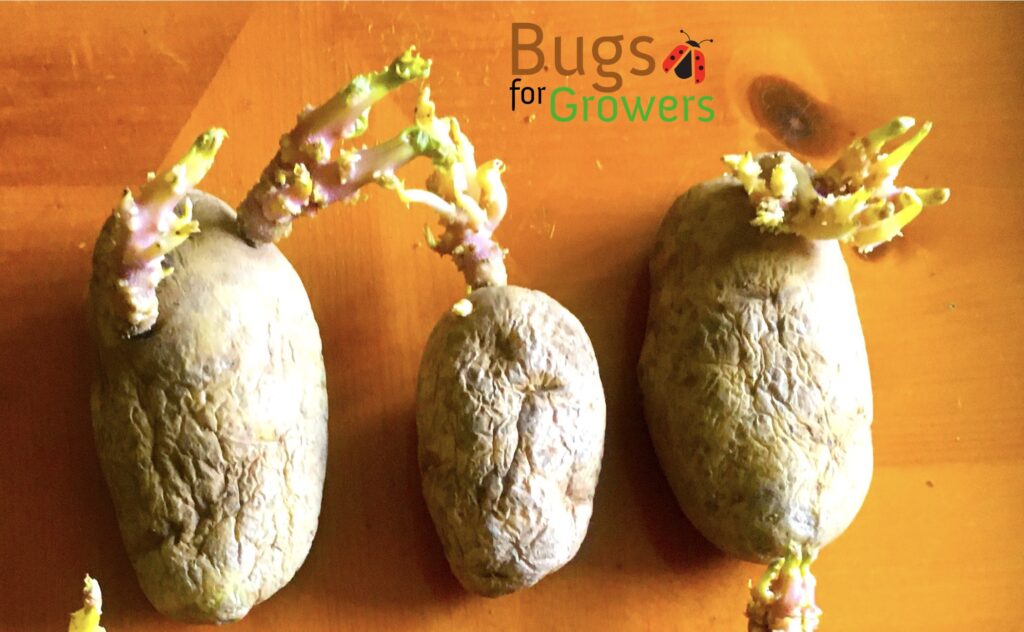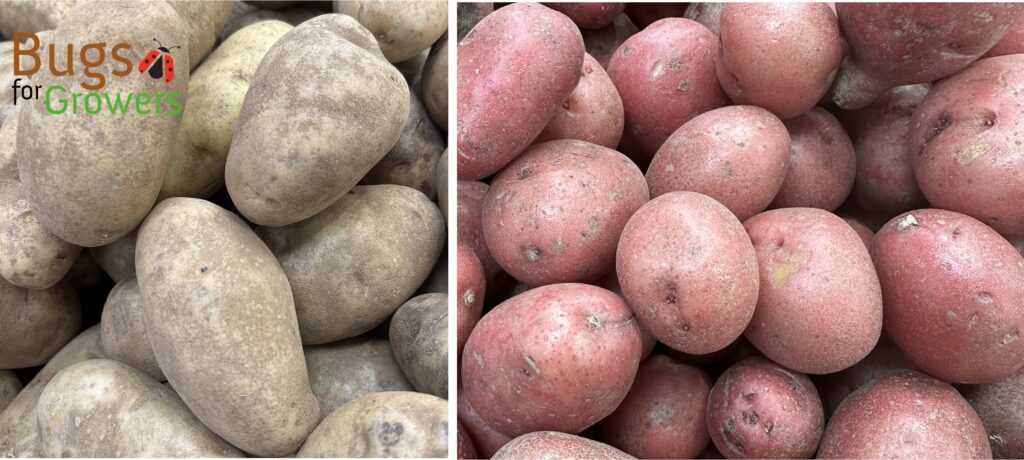Watch video about: When and How to Grow Organic Potatoes?
Potato (Solanum tuberosum) is a root vegetable (Photo 1), which is a good source of carbohydrates and vitamins (C, B6 and K1) but it contents a very low fat.
Organic potatoes are generally grown from organically grown, disease and pest free seed potatoes. Potatoes thrive best in full sun. The best time to plant potatoes is early spring when soil starts warming up and there is optimum moisture level in the soil. The ideal soil temperature at the time of planting potatoes is between 50 and 55 F and soil moisture between 60 and 80% of field capacity.
Also, organic potatoes are only produced using plant and animal based fertilizers like compost, manures, worm castings, blood meals or bone meals that are the main source of both macronutrients and micronutrients instead of chemical based synthetic inorganic fertilizers like Ammonium Nitrate, Ammonium Phosphate, Superphosphate and Potassium Sulfate that are generally produced from by- products of petroleum industry.
Synthetic inorganic fertilizers only provide fast releasing three primary macronutrients like nitrogen (N), phosphorus (P) and potassium (K) but they do not provide any other essential micronutrients (see below) to plants. These inorganic fertilizers may not be good for the environment because their residue can leach into water streams.
In contrast, organic fertilizers can provide additional macronutrients like calcium (Ca), magnesium (Mg), sulfur (S), oxygen (O) and hydrogen (H) and the micronutrients like iron (Fe), boron (B), chlorine (Cl), manganese (Mn), zinc (Zn), copper (Cu), molybdenum (Mo), nickel (Ni) for the proper and healthy growth of plants. Organic fertilizers can also add organic matter to the soil, introduce beneficial organisms to the soil, improve moisture holding capacity of soil and increase soil fertility.
Furthermore in organic potato production, pest and disease management is generally done releasing biological control agents like predatory insects, parasitic wasps and entomopathogenic nematodes instead of toxic chemical pesticides.
For the proper and healthy growth of organic potatoes, first clean and level the planting area by removing previous crop debris, stones using rake. Before planting seed potatoes, cover the planting area with 2- 3 inches of compost and a well-aged manure layer. These organic fertilizers (see above) will provide essential primary macronutrients like nitrogen, phosphorus and potassium, calcium magnesium and sulfur, and micronutrients such as boron, copper, iron manganese, zinc etc that are essential for healthy growth of plants and increasing potato yields.
Now is the best time to order certified seed potatoes (Photo 2) as organically grown, and free of pests and diseases for planting in early spring. The size of seed potatoes can be as small as a golf ball with a few eye buds (Photo 3) or larger potatoes (Photo 4) that can be cut into small pieces with 1-2 eye buds on each piece.
To avoid rotting of cut pieces due to infection by soil borne pathogens like fungi and bacteria in the soil, let the wounded portion of potato pieces dry a little bit under shade to heal the wounded cut areas before planting.
Plant potatoes at least 2 weeks before the last frost when soil temperature is around 50- 55 F and soil moisture at about 60- 80% of field capacity. For proper growth of potato plants and high yields, plant seed potatoes at 5-7 cm depth and 15 cm apart within a row while keeping 15 to 30 cm distance between the rows. Also, make sure the eye buds of seed potatoes are facing up and they are covered with a layer of soil and mulch to protect them from any unpredicted frost that can harm eye buds or young sprouts.
Seed potatoes will germinate within a week after planting and grow about 10 to 15 cm tall within two weeks under optimum soil temperature and moisture. Since new potato tubers grow above the seed potatoes, make soil mounds around potato shoots when they are about 10 to 15 cm tall for tuber development and more production (Photo 4).
After 2- 3 weeks of the first round of mounds, increase the size of the mound by pulling up more soil with rake around the potato stem without damaging roots and stems. Soil mounds will help grow more potatoes in the ground that in turn can increase potato yields. Mounds will protect potatoes from exposure to full sun so that growing potatoes will not turn green. Green potatoes are not edible because they contain toxic alkaloids called solanine.
For high yields, make sure that weeding is done regularly and if necessary they should be irrigated to maintain soil moisture level at 60- 85% of field capacity in the soil.
For control of insect pests of potatoes, use beneficial insects like ladybugs, parasitic wasps, assassin bugs, green lacewings, praying mantis, spined soldier bugs and entomopathogenic nematodes.
Potatoes can be harvested anytime after flowering but depending on the variety, they can be harvested within 50- 60 days after planting (photo 1). However, mature potatoes are ready for harvesting when plants start turning yellowish brown and drying. Clean harvested potatoes and store them in a cool place until used in cooking (Photo 5).

